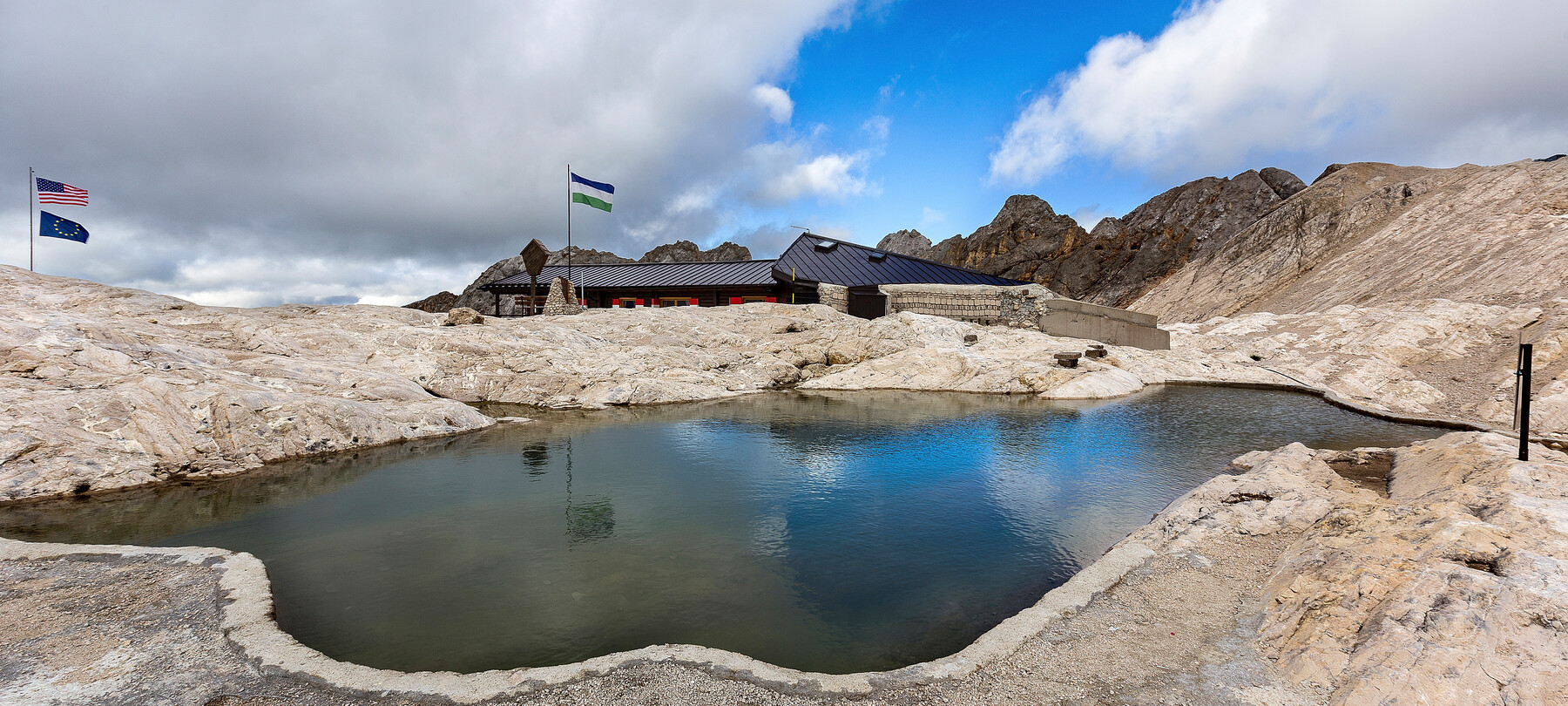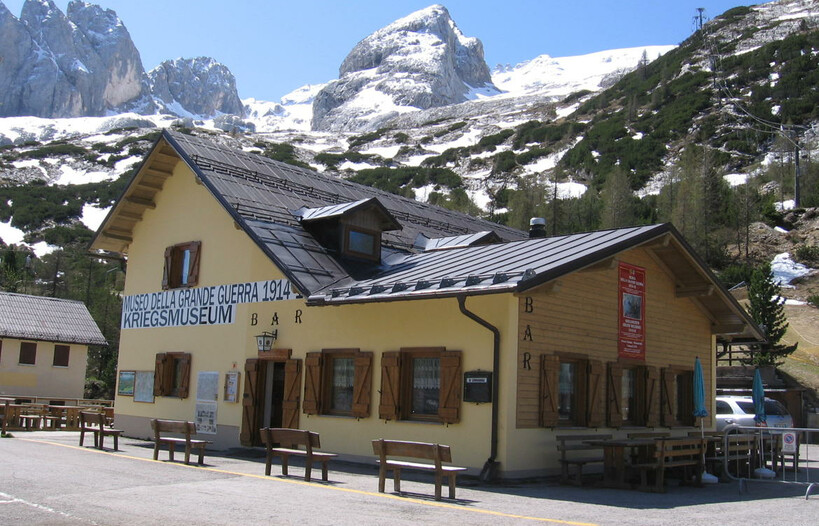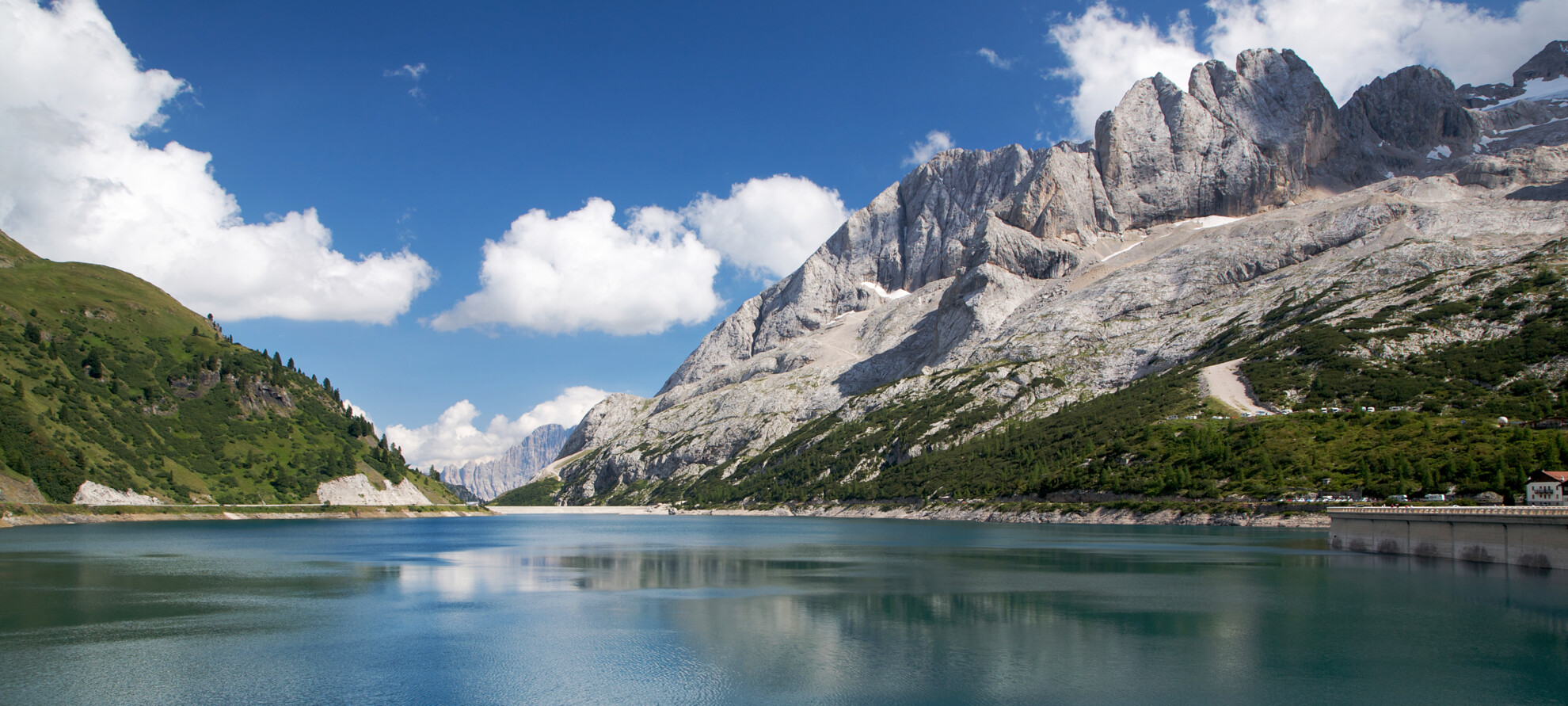Marmolada
Nature and history of the “Queen of the Dolomites”
Its outline is inimitable: the Marmolada appears like an huge massif topped by an impressive glacier, the largest in the entire Dolomite system.
Punta Penìa, the highest peak of the entire Dolomite mountains, (more than 3.300 m a.s.l.) stands out among the massif’s peaks. This is also why the Marmolada, with its pale dolomite limestone rocks is called the “Queen of the Dolomites”.
Thanks to its perennial snow, the mountain has been the protagonist of mountaineering and skiing history. However, its history is also linked to the sad issue of the Great War. Rocks and ice were the scene of gruesome clashes between Italian and Austrian soldiers: a history you can discover by visiting the highest museum in the world!
You can reach the Marmolada* by starting off from Canazei and continuing in the direction of Passo Fedaia. Once you reach 2.057 m a.s.l., you will see the mountain reflected in the waters of Lake Fedaia. Its grandeur leaves you speechless.
*ATTENTION: These routes are only for experienced mountaineers. We advise you to do them accompanied by an Alpine guide.

Visit the Marmolada glacier and meditate on climate change
The Dolomites and the Great War
World War I seriously affected Trentino and completely changed its history. In August 1914, the men were drafted into the army and sent to the Russian front, where they suffered huge losses. Starting from May 1915, an extensive area of the Trentino territory was devastated by bombings. A third of the population was evacuated and transferred to Austria, Bohemia, Moravia, or to parts of Italy. At the end of the war, after the fall of the Austro-Hungarian Empire, Trentino became part of the Kingdom of Italy.

Museum of the Great War
See more

